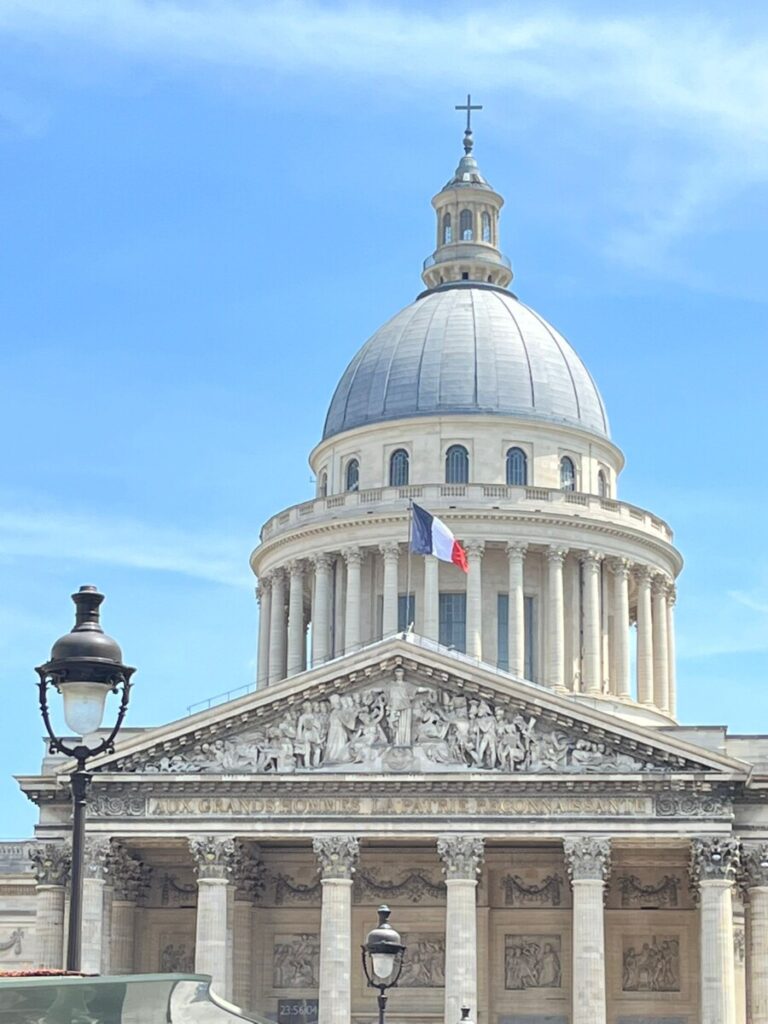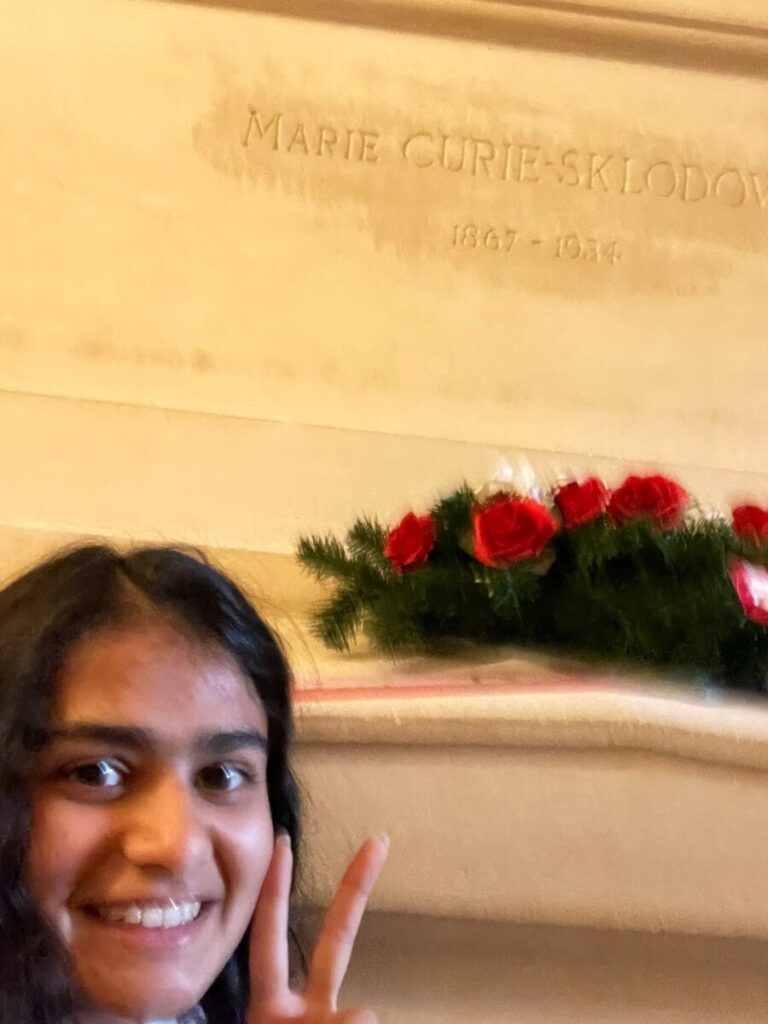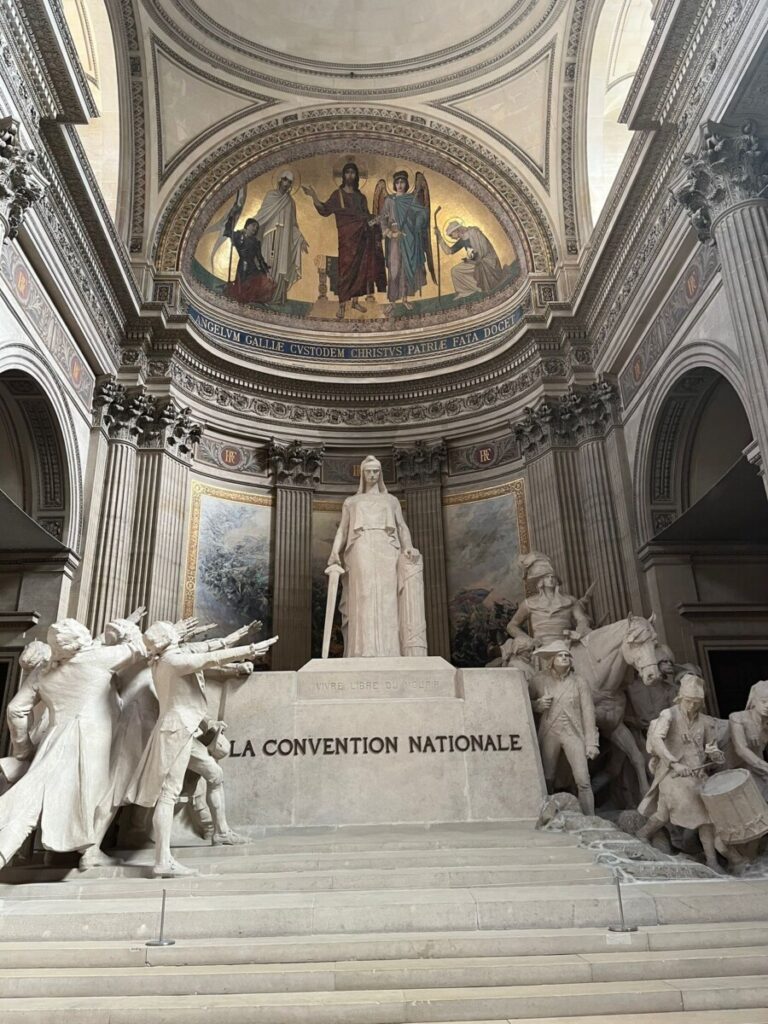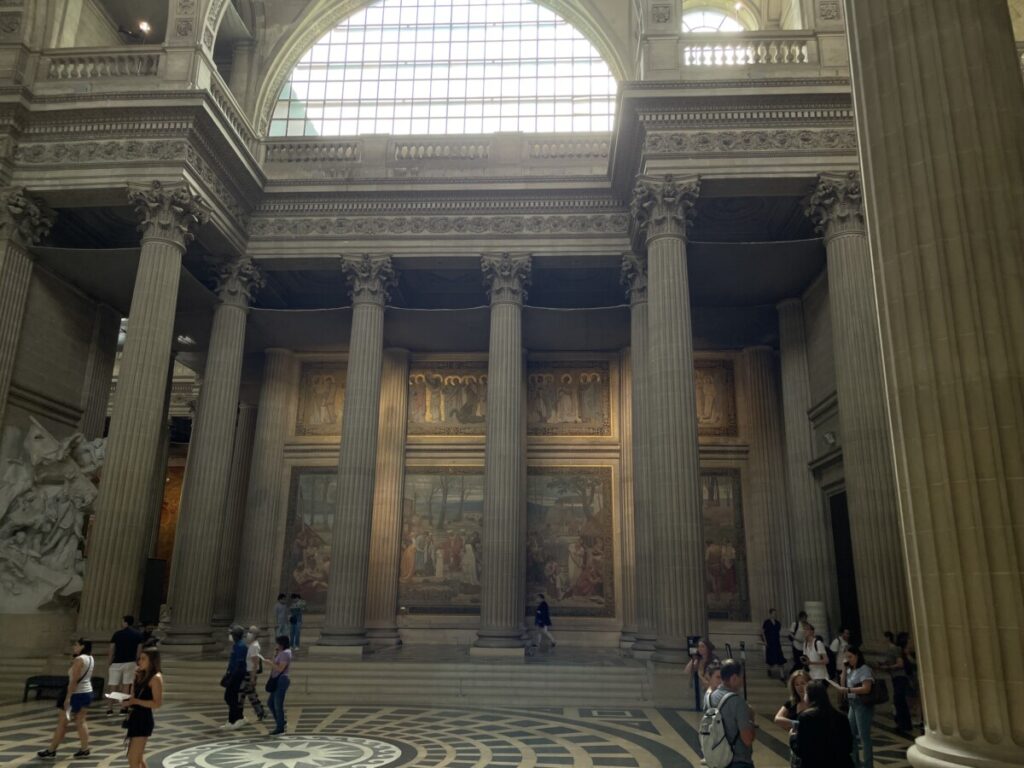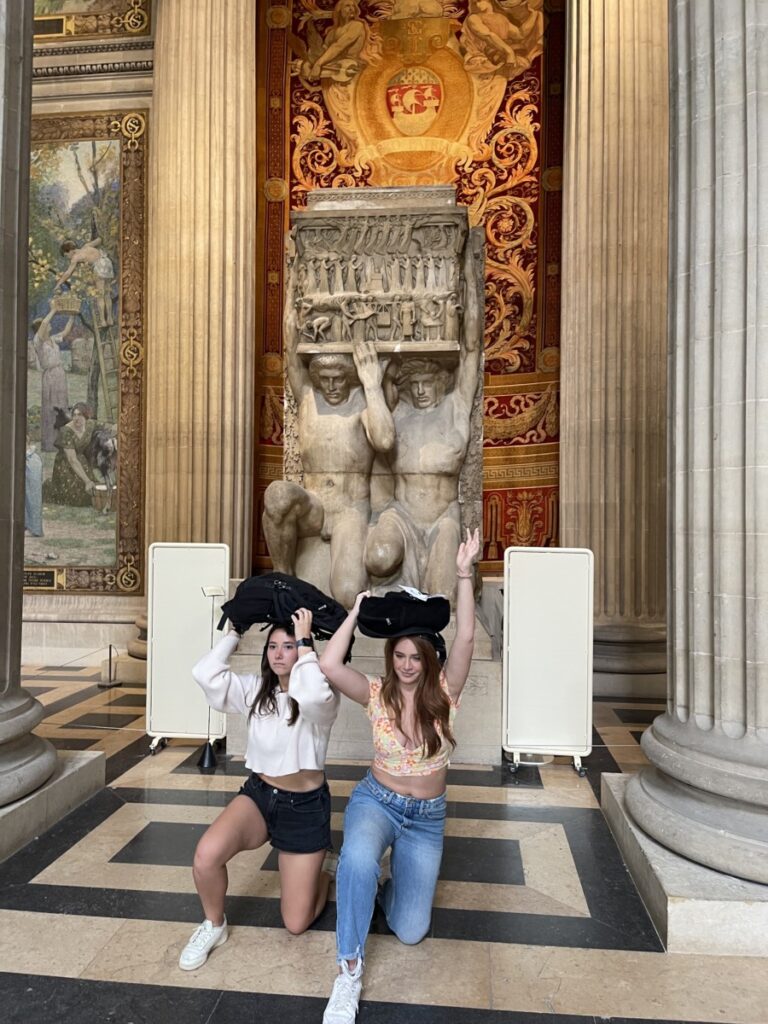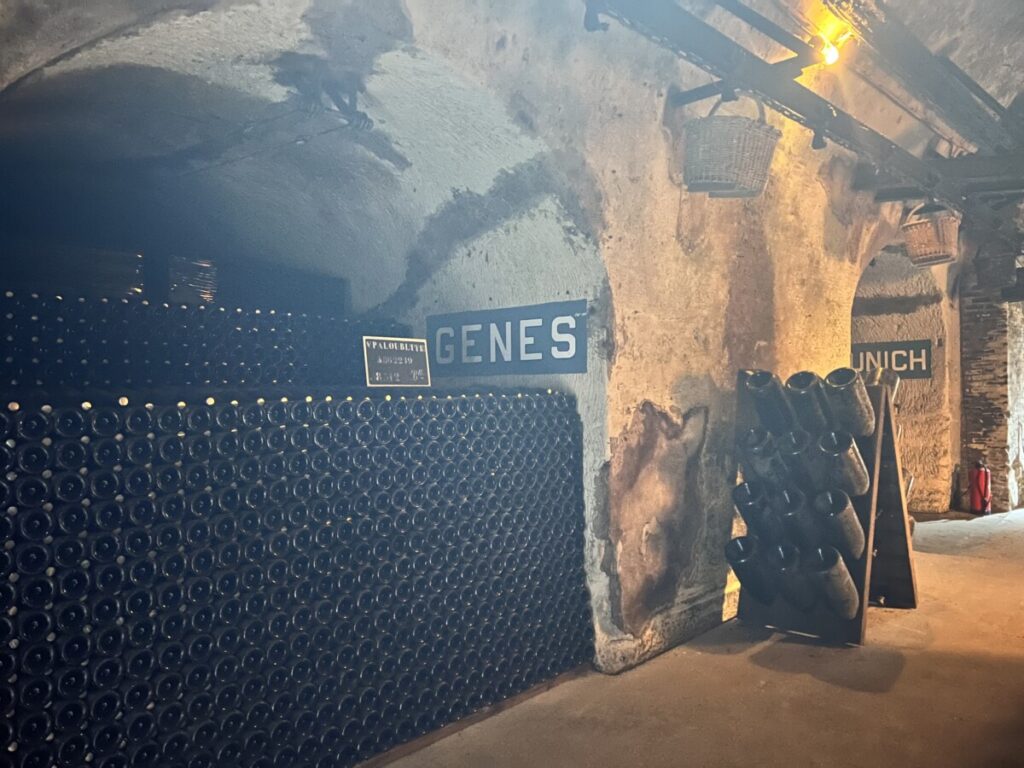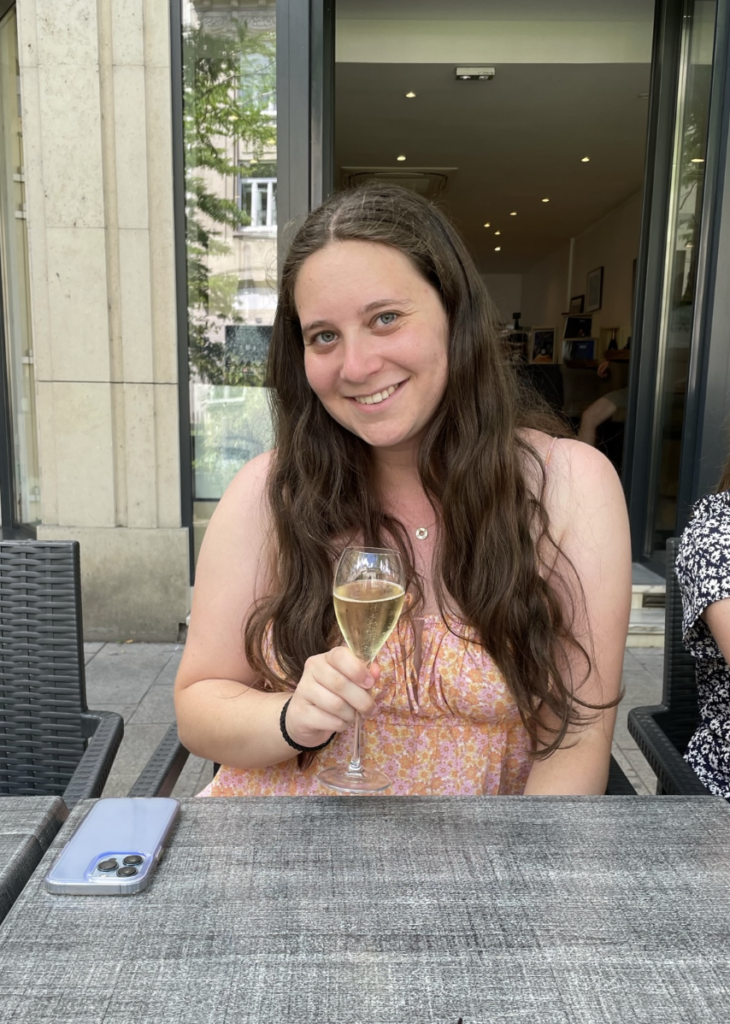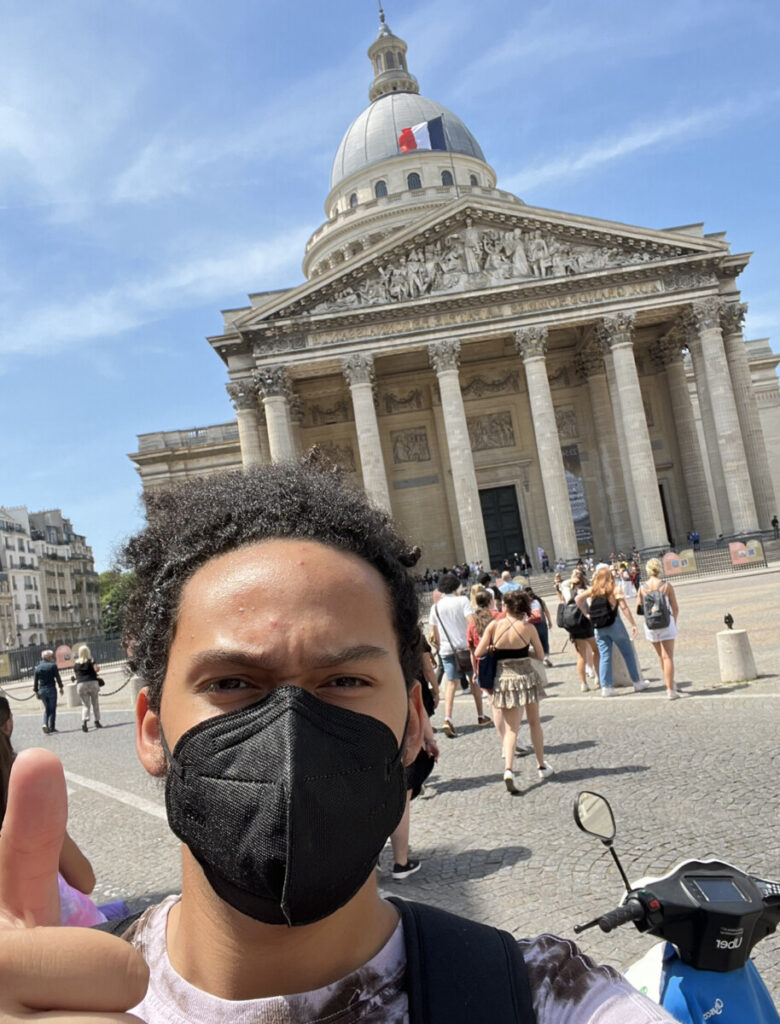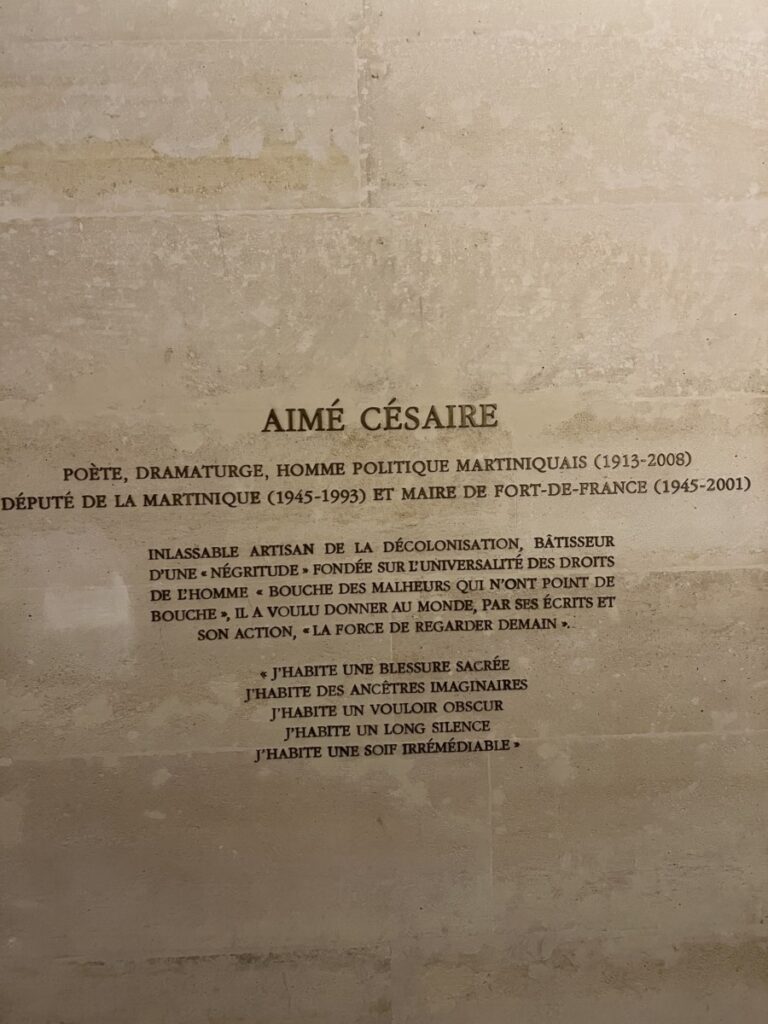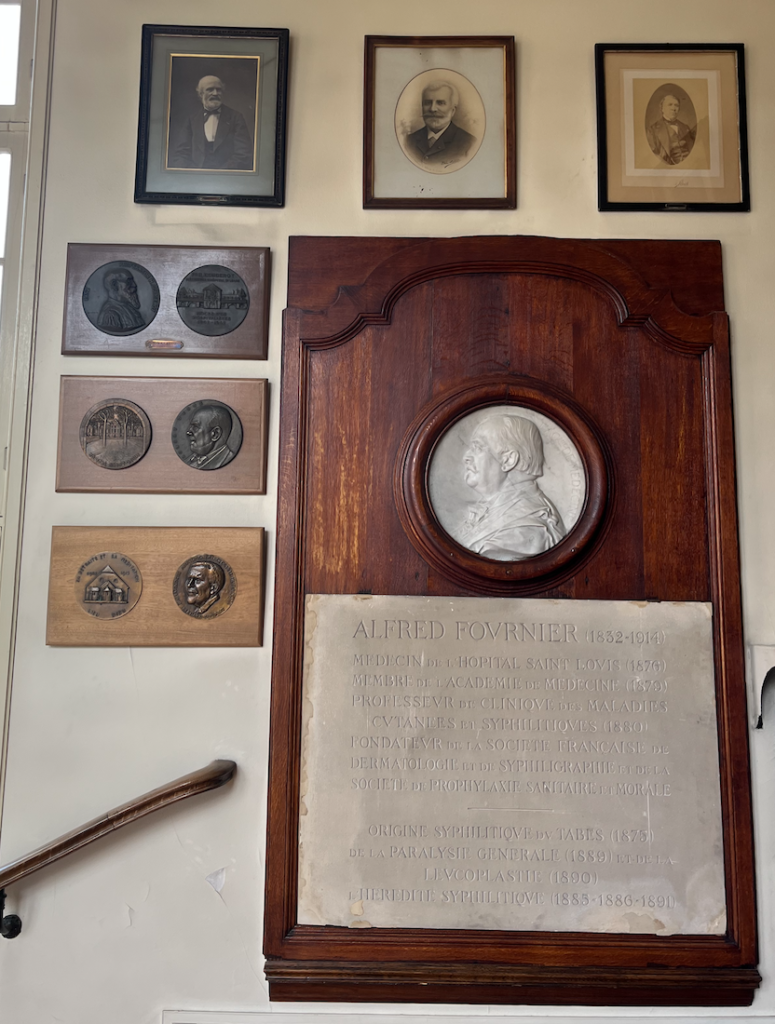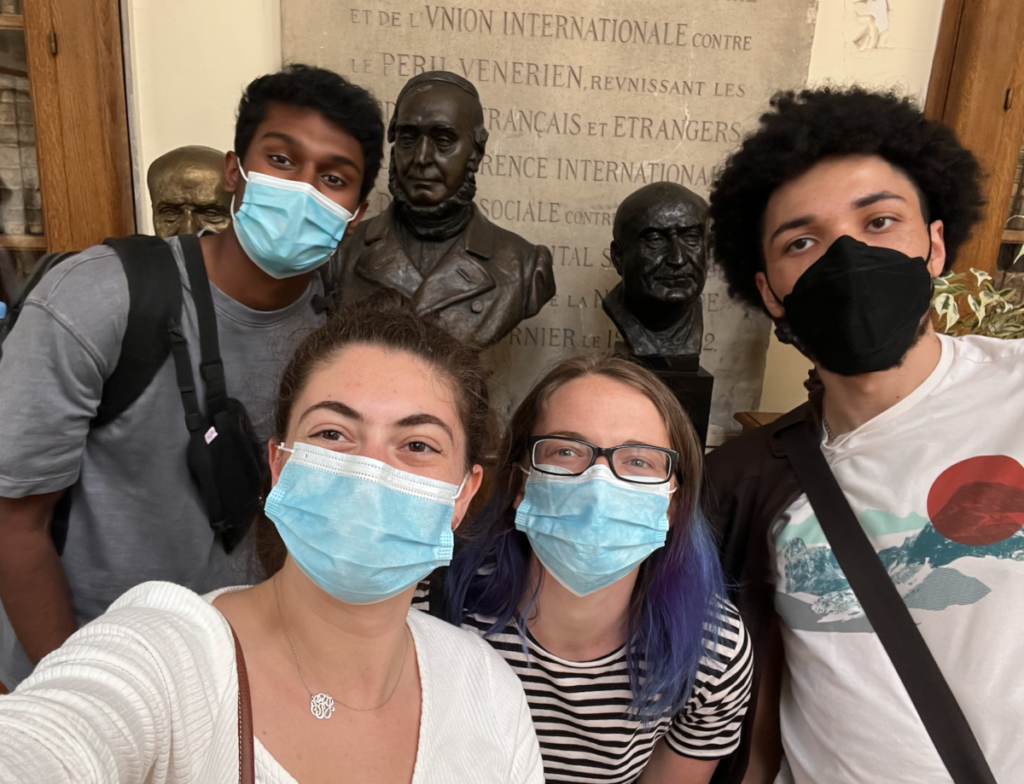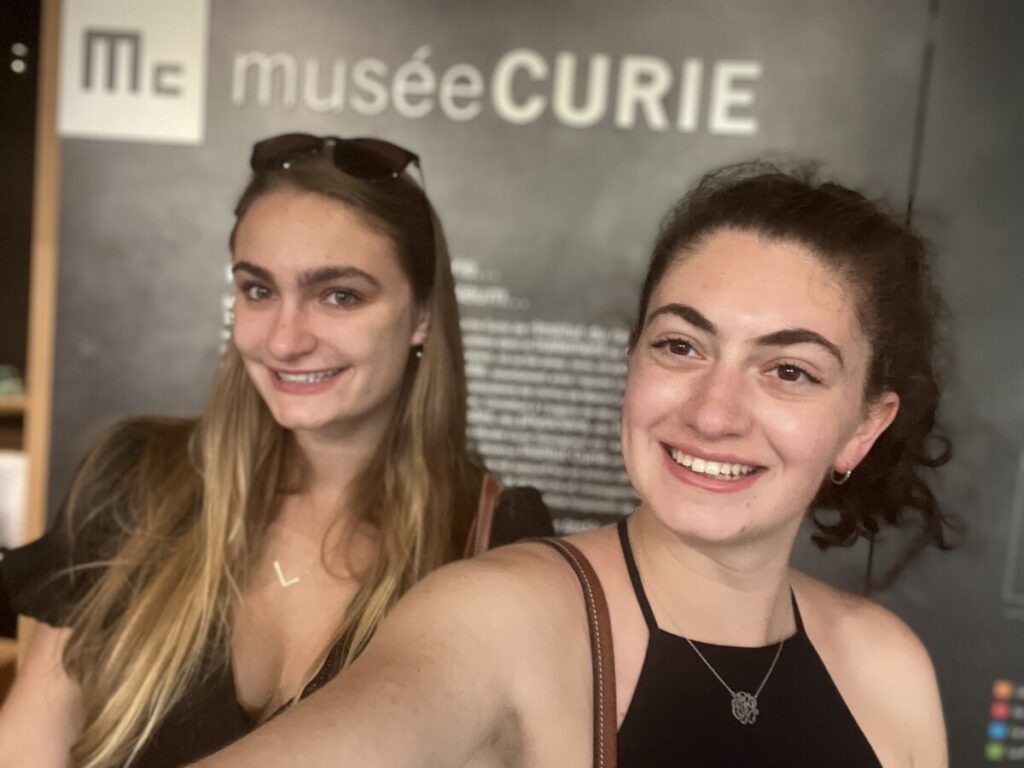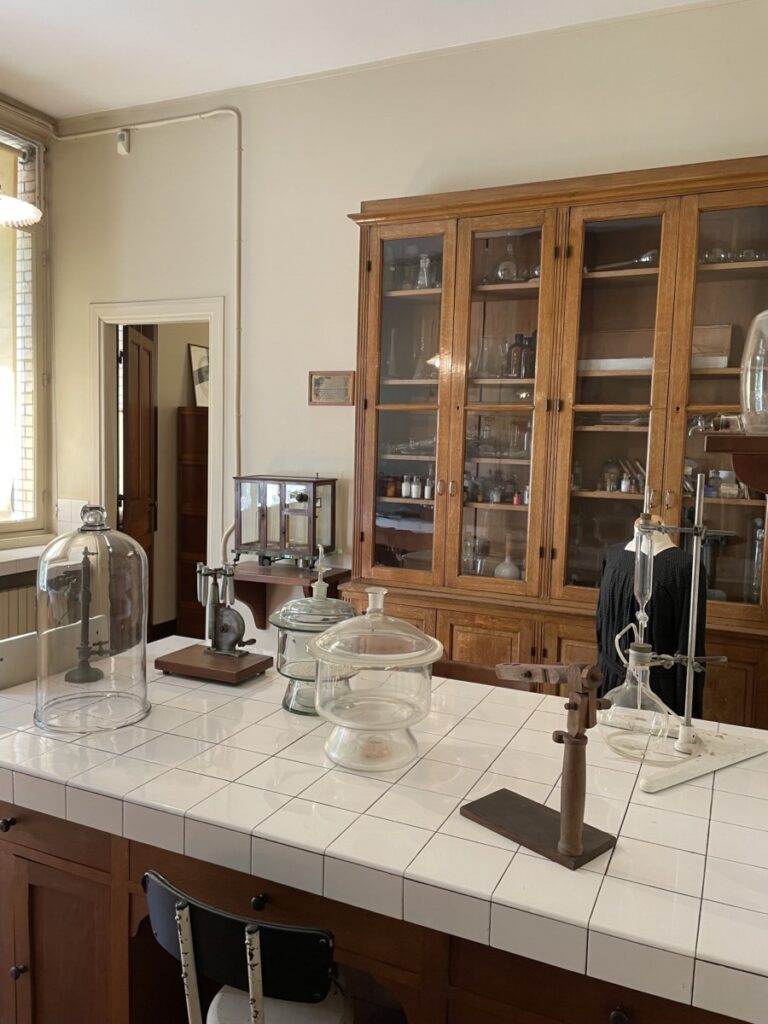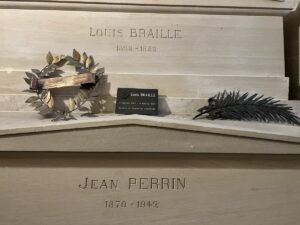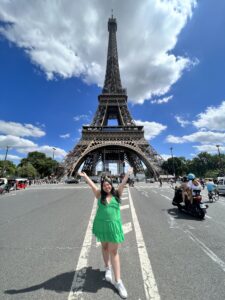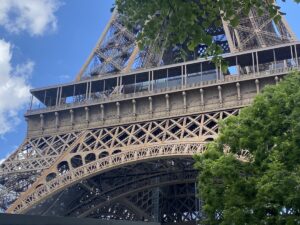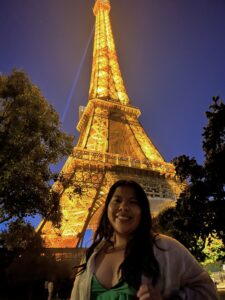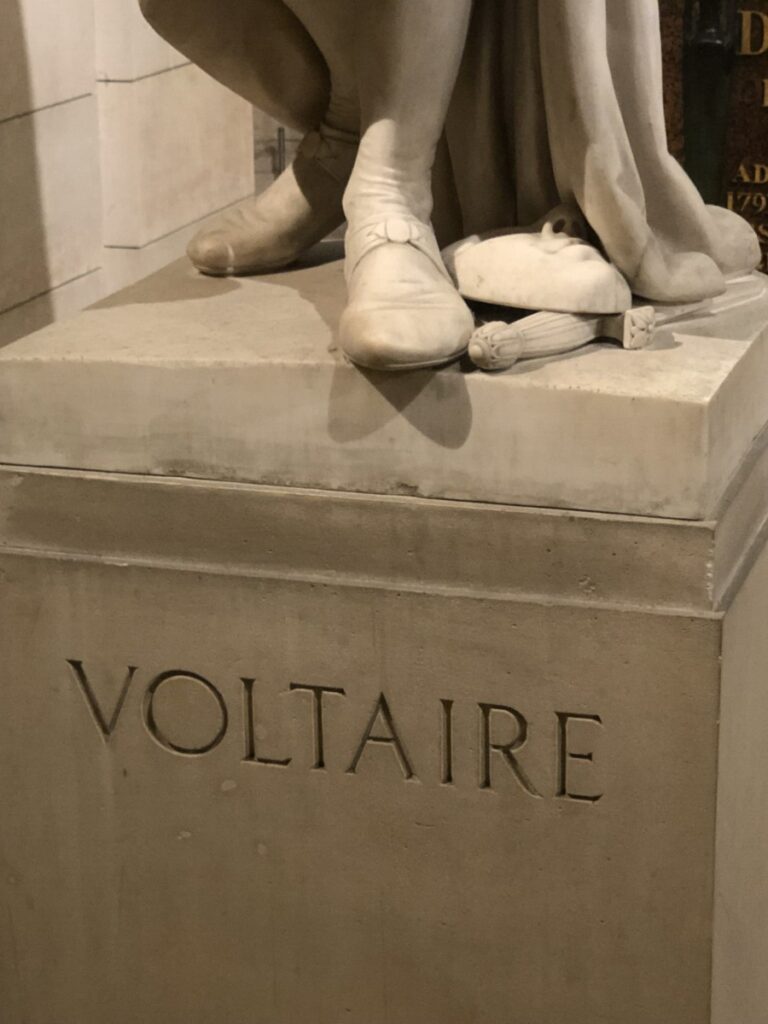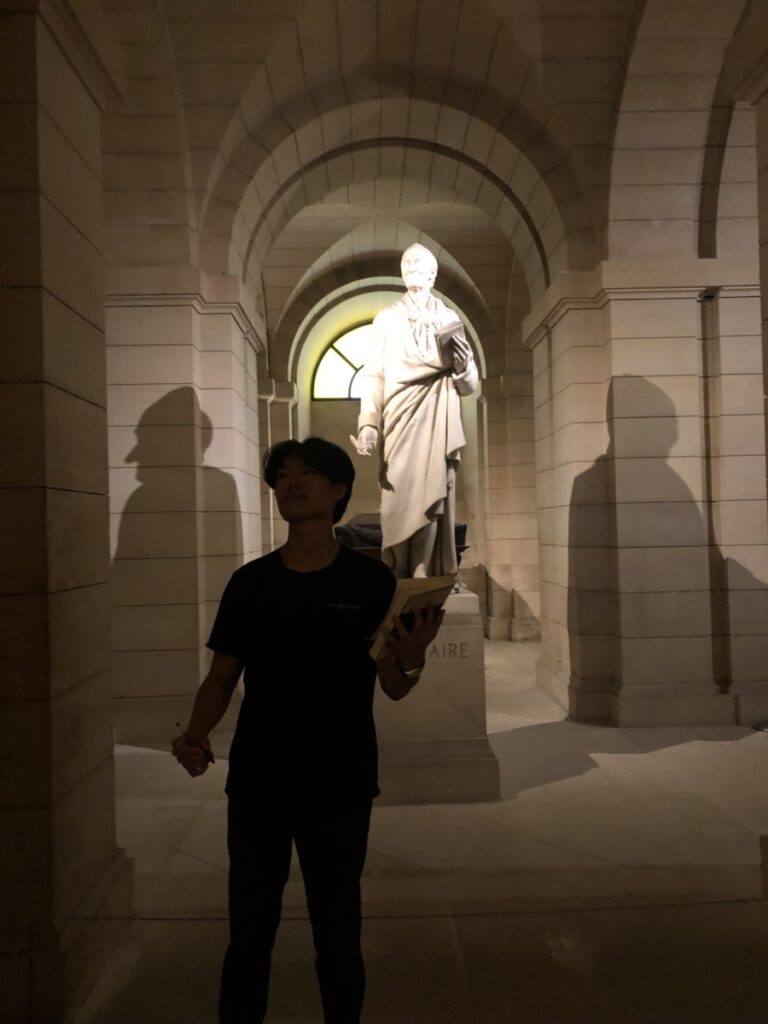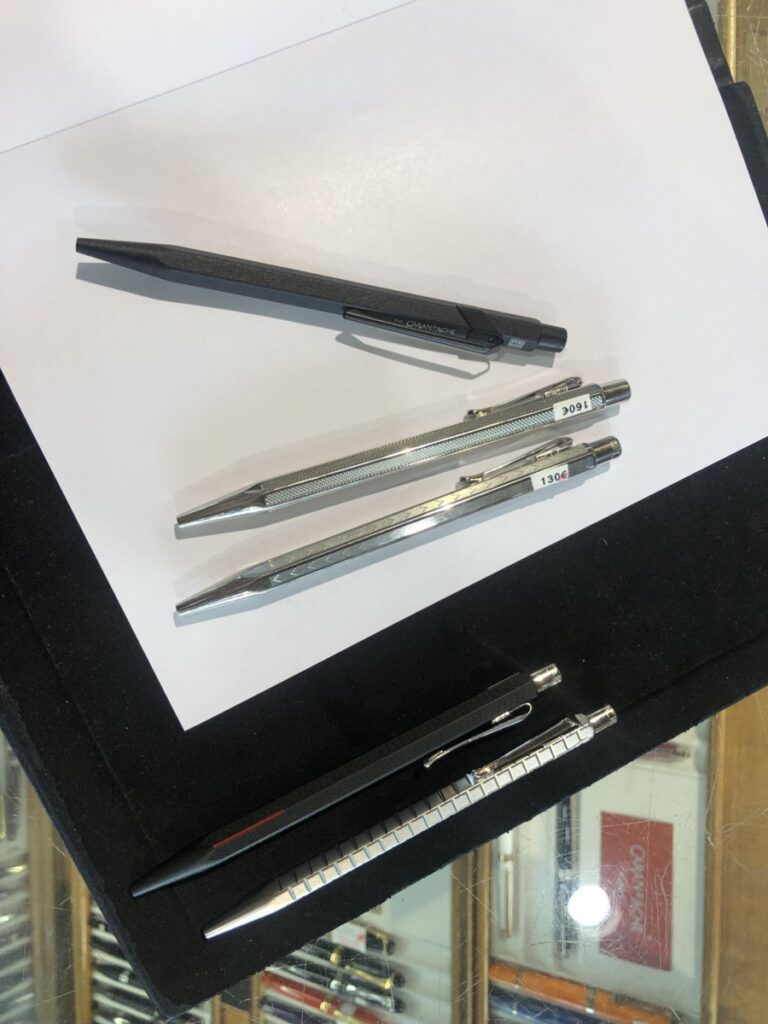Last week, we visited the Musée de l’Homme, an anthropology museum. Upon our arrival, I was stunned by its proximity to the Eiffel Tower. There was a beautiful balcony with the perfect view of the Eiffel Tower and part of the skyline of Paris. The museum had multiple floors, displaying the history of man. I was most intrigued by the development of the brain, as I learned a lot about pre-Homo sapiens brains in one of the NBB classes. It was interesting to see the timeline of human evolution and relate that to what I learned in my Introduction to Behavior class at Emory. I was able to recognize the different hominins (our ancestors!) Below, you can see a picture of Ally and I in front of a display of different brains – so cool! The display also included the brains of chimpanzees and gorillas with whom we share a common ancestor.
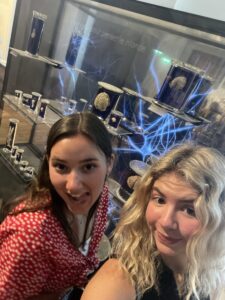
There was a fascinating interactive display that converted my face into that of a Neanderthal – I felt like a whole new person! I remembered from NBB 201 that our ancestors had flatter and wider skulls in comparison to our more globular skulls. I also really enjoyed learning more about the cultural aspect of our ancestors. I saw the different tools that were used by Homo erectus and Homo habilis. I feel a lot more confident in my understanding of our ancestors and development as humans because of the biological and cultural displays.
One unique aspect of the museum was the wall of tongues – creepy, right? But I promise they weren’t real tongues. They were model tongues and when you pulled them, you were able to hear different dialects from languages across the world. Although I was nervous to touch the potentially germ-infested tongues, I was intrigued by the opportunity to hear a new dialect. My favorite was Tagalog which comes from the Phillipines!
Another small display of the museum, pictured below, that I thought was interesting was the division of the brain based on phrenology by Dr. Spurzheim. Phrenology is a field of neuroscience that focuses on how the shape of the brain affects certain functions and behaviors. Dr. Spurzheim was mentored by Dr. Franz Gall, the founder of phrenology. Together, they identified many different functional areas of the brain. Dr. Spurzheim brought the study of phrenology to America when he moved to the Boston. Although phrenology is a pseudoscience, Dr Spurzheim’s work greatly contributed to our modern understanding of the anatomy of the brain (Bilal et al., 2017).
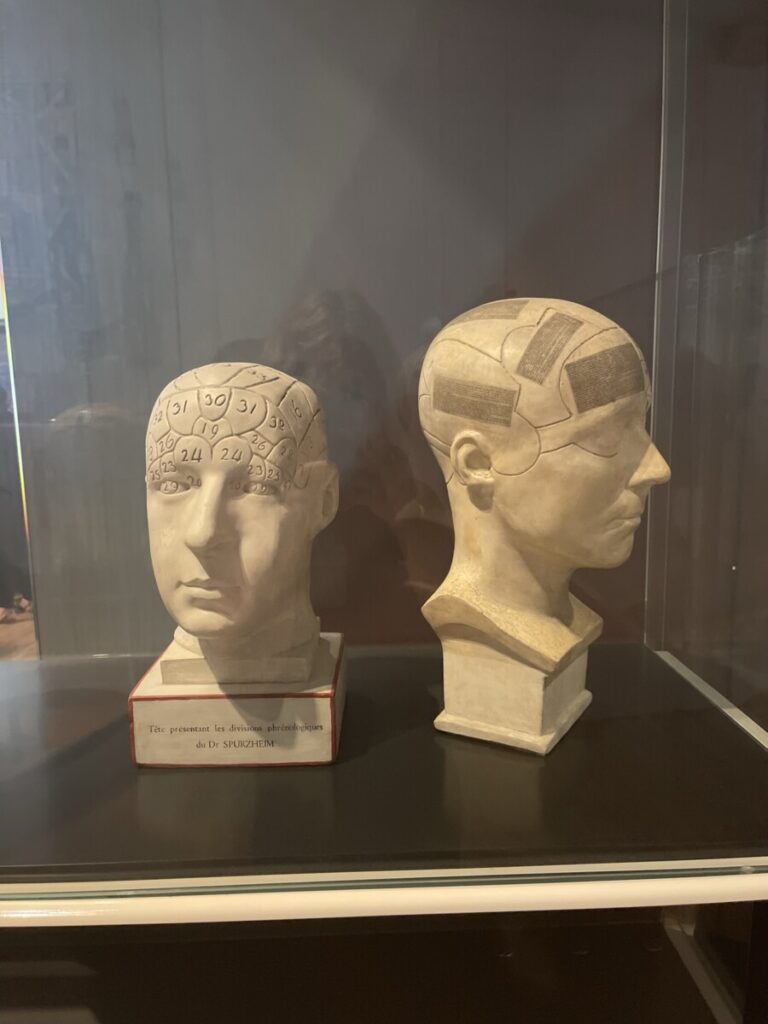
Reference:
Bilal, M., Edwards, B., Loukas, M., Oskouian, R. J., & Tubbs, R. S. (2017). Johann Gaspar Spurzheim: A Life Dedicated to Phrenology. Cureus, 9(5), e1295. https://doi.org/10.7759/cureus.1295

